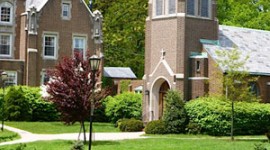Imminent Destruction Threatens Historic Mount Manresa in Staten Island, NY
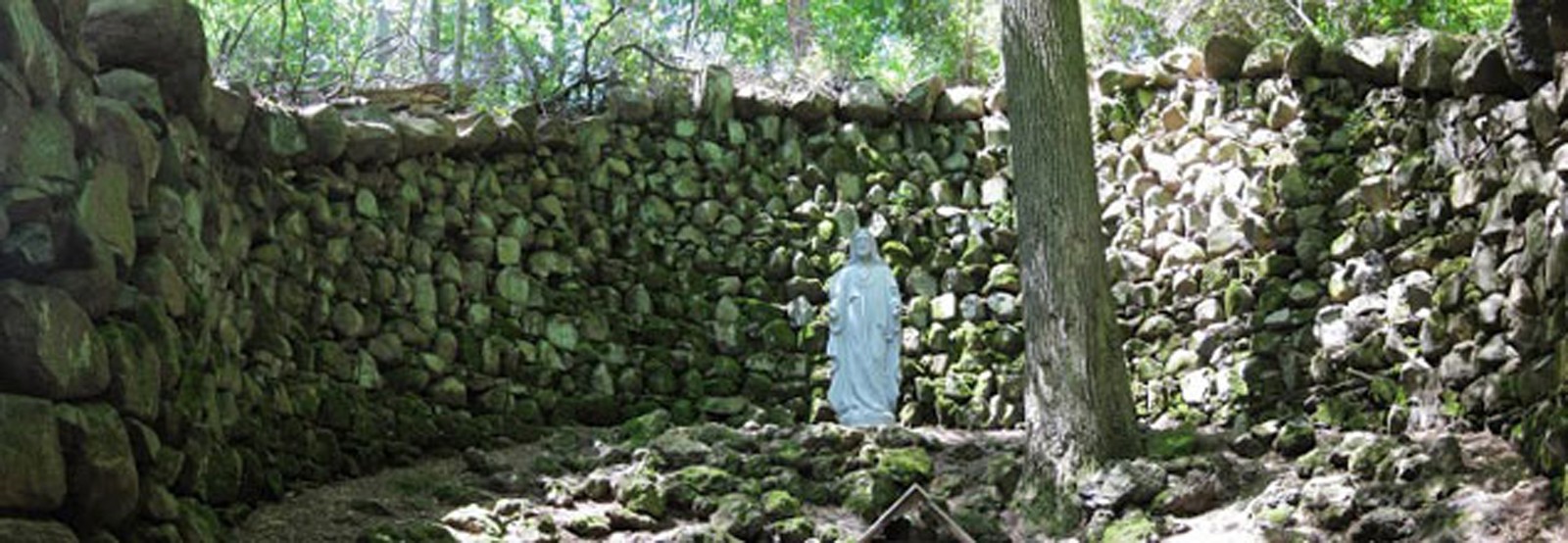
Once the home and estate of businessman Louis H. Meyer, Staten Island’s Mount Manresa has a rich natural and cultural heritage. Now the property, which has been determined eligible for listing in the National Register of Historic Places, is facing imminent destruction at the hands of developers who purchased it in 2014.
History
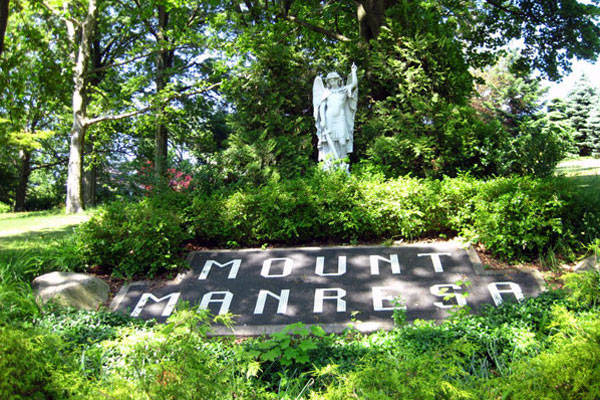
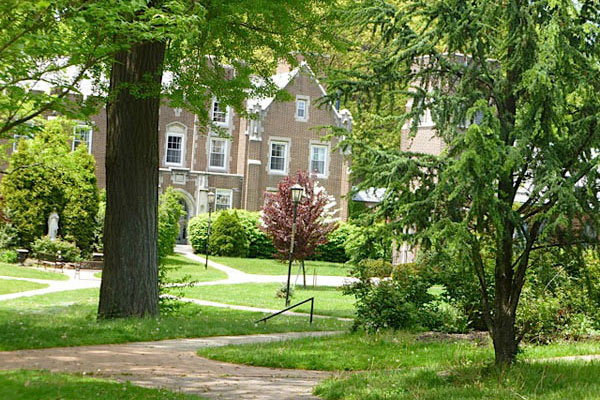
(upper) The Mount Manresa entry sign has been removed; (lower)
Mount Manresa campus. Photos courtesy Committee to Save
Mount Manresa.
Set within a terminal moraine, the land surrounding Mount Manresa is a rare example of Staten Island’s natural landscape unadulterated by agriculture and mining. The property sits atop a hill of debris left by a receding glacier in the last ice age and is surrounded by idyllic woodland of native oak, tulip poplar and black tupelo trees. This old growth forest, which contains trees as old as 400 years, is habitat to owls and hawks and is located along the Atlantic Flyway, a migration path for numerous threatened species of birds.
The property was once the site of Native American settlements and sits along the west side of Fingerboard Road, a Native American trail used for hunting and fishing prior to 1661. Numerous indigenous artifacts have been found in and around the grounds.
The first documentation of the property’s ownership dates to 1685 after the arrival of the Dutch and French Huguenot settlers, when Samuel H. Kelly received the land as part of a land grant. Although it changed ownership several times, the natural landscape was preserved. In 1861 Louis H. Meyer purchased the property and named his new estate Fox Hill Villa. Meyer was a successful businessman whose career included stints as the president of the Fort Wayne Railway Company, president of the neighboring Village of Edgewater, and founder and first president of the Staten Island Savings Bank.
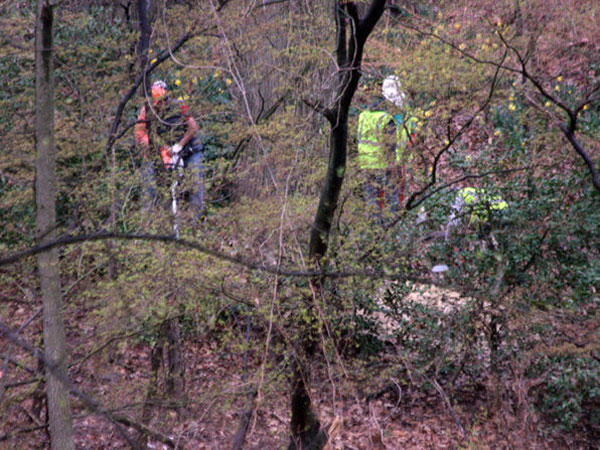
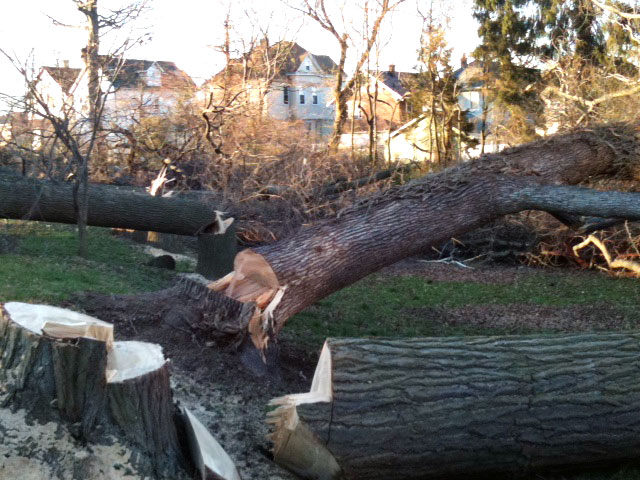
(upper) Workers with chainsaws on April 15, 2014. Photo courtesy
Committee to Save Mount Manresa; (lower) Almost all of the old
growth trees have been cut down. Photo courtesy Jack Bolembach.Upon acquiring the property, Meyer began shaping the land around the pre-existing manor house, creating unparalleled vistas of New York Harbor and planting trees and shrubs that he imported from Europe. Investing more than $800,000 in improvements to the property, Meyer installed drainage, dug an artesian well, built a water tower and cisterns to provide and store water, and constructed greenhouses to grow tropical fruit. In the 1860s he hired master masons to build a stone grotto made from locally-sourced iron ore on the north face of the glacial hill. The stone grotto, the oldest in New York City, was skillfully crafted without the use of cement or mortar.
Meyer passed away in 1892 and the property, vacated in 1898, remained unoccupied until 1911, when Father Terence Shealy purchased it for $50,000. Shealy was a Jesuit priest enlisted to help launch the lay retreat movement in America. He renamed the estate Mount Manresa after the similarly-named retreat in Spain and opened it as the first Jesuit Retreat House for laymen in the United States.
In 1964 four acres of the property were sold to the City of New York so that the Staten Island Expressway could be built, reducing the property to its current 15 acres – a rare swath of open green space on the Island. The retreat continued to operate until the end of May 2013; two months after the Jesuit Church announced that they were under contract with an undisclosed buyer for the sale of the property. The Committee to Save Mount Manresa is a grassroots community movement that was organized that same month to protect and preserve Mount Manresa for use as a public park.
Threat
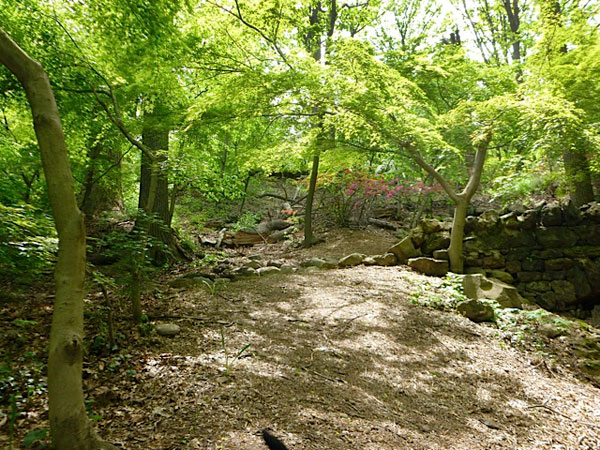

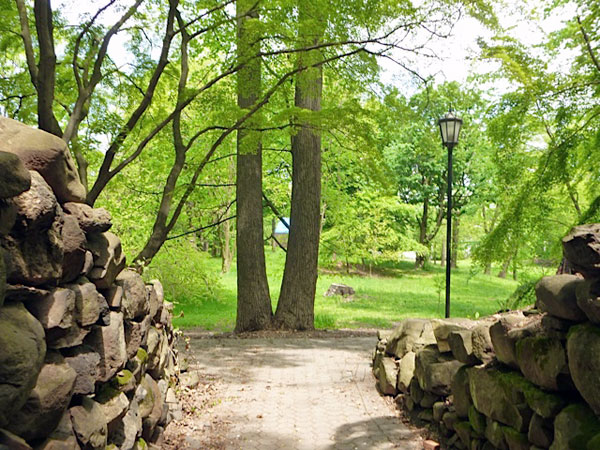
Mount Manresa campus, photos courtesy Committee to Save Mount
Manresa. In July 2013 the New York State Attorney General put a temporary halt to the sale of Mount Manresa. Attempts were made to work with the church to void the sale and collaborate with local elected officials and the non-profit organization On Your Mark, which has expressed interest in purchasing the existing buildings. After two Temporary Restraining Orders expired, the sale of Mount Manresa to Savo Brothers Developers was finalized in February 2014. Savo Brothers has applied for permits to build a modern townhouse development on the site. Although a lawsuit launched by the Committee to Save Mount Manresa is still under appeal, demolition has already begun: on Tuesday, April 15, 2014, hundreds of old growth trees were cut down.
How to Help
In July of 2013 the New York State Office of Parks, Recreation and Historic Preservation determined that Mount Manresa was eligible for listing in the National Register of Historic Places. Unfortunately without intervention by the State of New York, the destruction of the unique cultural heritage at Mount Manresa is imminent. Supporters of preserving the land as a public park should contact the office of the Mayor of New York and the New York Public Advocate’s office by phone or email and request that Mount Manresa be preserved through Condemnation.
Mayor Bill de Blasio:
Address: City Hall, New York, NY 10007
Phone: 311 or 212-NEW-YORK outside NYC
Twitter: @BilldeBlasio
New York Public Advocate’s office:
Letitia James
Telephone Hotline: (212) 669-7250
Email: GetHelp@pubadvocate.nyc.gov
Address: 1 Centre Street, 15 Floor. New York, NY 10007
Twitter: @TishJames
Supporters can also sign the online petition at Moveon.org.




